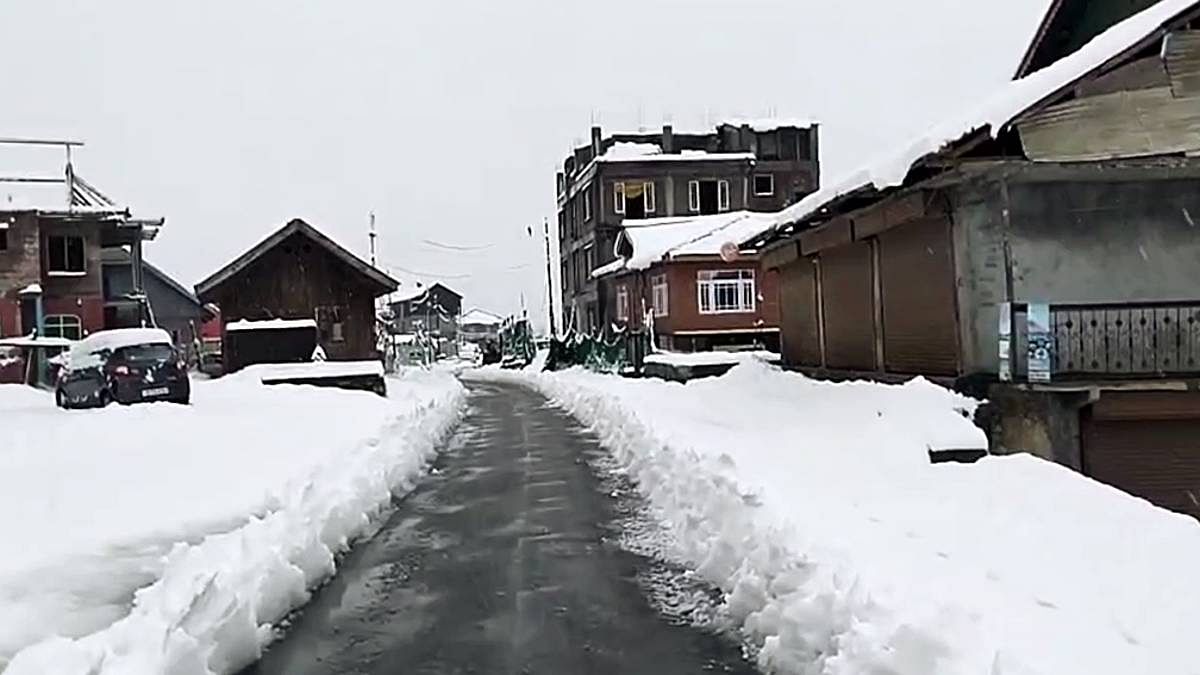
SNOW IN KASHMIR IN APRIL, HEATWAVE IN EAST & SOUTH — CLIMATE CHANGE COULD BE CAUSING EXTREME WEATHER
New Delhi: This year, many parts of the country are experiencing weather events that are atypical for April and May. While most parts of eastern India and the southern peninsula are grappling with extreme and prolonged heat spells, Kashmir is blanketed in snow. Weather scientists say that such extreme weather recordings could be impacts of climate change — a warning sign for governments to make cities more climate resilient in the coming years.
In the second half of April, parts of Kashmir experienced heavy rain and snowfall, a sight that is usually seen in the months of December and January. Areas including Gulmarg, Sonamarg, Kupwara and Baramulla recorded intense snowfall along with a sharp drop in temperatures.
These weather phenomena in April-May are even more surprising because the state recorded a dry snow and rain spell in December and January. Data from the India Meteorological Department (IMD) shows that Jammu and Kashmir recorded an 80 percent rainfall deficit in December and 100 percent deficit in January.
While Kashmir is battling unseasonal rain and snow, parts of Odisha, West Bengal, Bihar, Jharkhand, Tamil Nadu, Telangana and other states have been reeling under intense and continuous heatwave conditions for at least two weeks. The Met department has warned of another week of high temperatures in these areas.
“Maximum temperatures will continue to be in the range of 44-47 degrees Celsius over coastal Andhra Pradesh, Telangana and Rayalaseema for the next three days. Heatwave conditions will also continue in eastern India for the next few days,” an IMD official said.
Also read: Above-normal rainfall, or is it? Why monsoon forecast remains a challenge for IMD
What is causing the extreme weather recordings
Experts say there have been some unique weather systems at play this year because of which some parts are recording extreme heat while others are experiencing rain and snowfall activities.
Madhavan Rajeevan, former secretary, Ministry of Earth Sciences said that the primary reasons behind the prolonged heat spells are fewer thunderstorms and an anti-cyclone circulation in India’s southeastern coast. Rainfall activity in these months does not let temperature levels rise beyond a certain level and breaks prolonged heat spells in these parts. That has not happened this time.
The snowfall in Kashmir, on the other hand, is because of western disturbances in the region.
“There are some weather systems at play this year that are triggering these extreme weather recordings,” Rajeevan said.
This year, El Niño conditions also had a role to play in the lack of snow in the region, according to IMD scientists. El Niño and La Niña conditions are two phases of the El Niño Southern Oscillation (ENSO) phenomenon that occurs in the equatorial Pacific Ocean. The El Niño phase is marked by warmer temperatures, while La Niña refers to a cooling period.
Climate change impacts cannot be ignored
These unpredictable and extreme weather events could also be worrying signs of climate change.
Mahesh Palawat, vice-president (meteorology and climate change), Skymet Weather, a private weather forecasting agency, said that climate change impacts cannot be ignored.
“We will have to observe this trend for another four to five years to confirm that this is an impact of climate change, but early observations are pointing towards a worrying trend,” Palawat said.
He said that over the past two-three years, a trend has been noticed in parts of Kashmir — a number of western disturbances that are usually seen around winter are now being pushed further into the spring season. This delayed onset of western disturbances, leading to reduced winter rain and snow, is a cause of concern.
Local weather recordings are also confirming this. In Kashmir, over the past few years, there has been a noticeable decline in snowfall and a gradual rise in winter temperatures. The number of western disturbances in December and January are also fewer now.
It’s not just India; countries around the world have been witnessing extreme weather events owing to global warming and climate change. A report by the World Meteorological Organization (WMO) released in April this year highlighted that human-induced climate breakdown is triggering extreme weather events the world over. The report noted that a severe heatwave in India last year caused around 110 deaths
“A major and prolonged heatwave affected much of South-East Asia in April and May, extending as far west as Bangladesh and Eastern India, and north to southern China, with record-breaking temperatures,” the report read.
Countries will have to work towards creating climate resilient cities to fight climate change impacts, experts said.
“Governments have to be prepared to deal with such unpredictable weather. Cities have to be made more resilient and developmental activities need to be carried out while keeping the ecology of the area in mind,” Rajeevan said.
Also read: 5,710 forest fires in April alone — Uttarakhand’s burning problem & what’s behind it
2024-05-05T07:53:40Z dg43tfdfdgfd